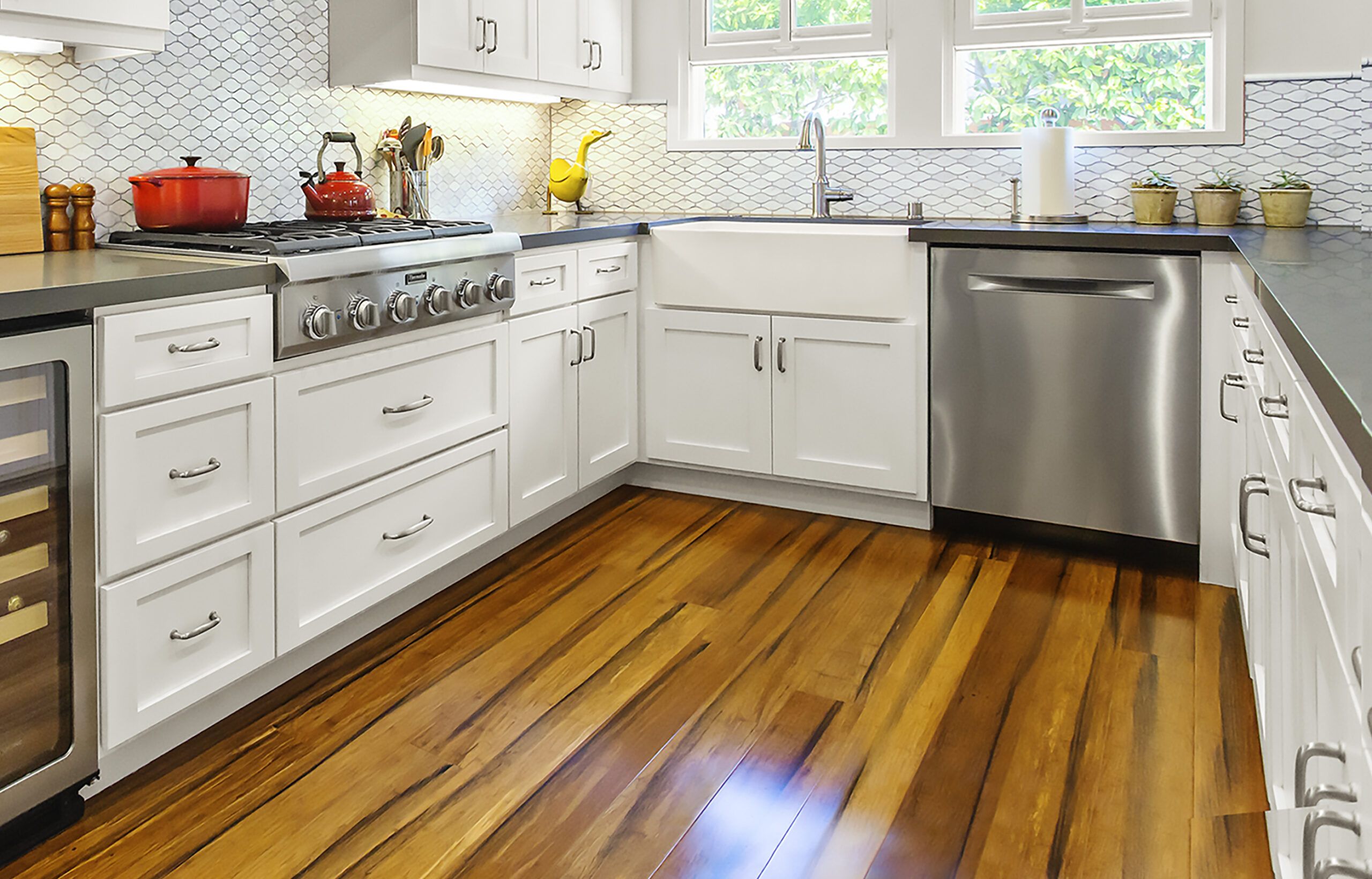Bamboo is a highly renewable resource, making it an increasingly popular flooring option for eco-conscious homeowners. It offers the look and feel of hardwood while providing unique benefits in terms of sustainability and performance. In this guide, we’ll walk you through the different types of bamboo flooring available and how to choose the right kind for your home.
Types of Bamboo Flooring
Unlike the trees used to make traditional hardwood, bamboo is a grass that grows incredibly fast, reaching its full height of 40–80 feet in just one year. The bamboo used for flooring matures over the next five years, thickening to 6–8 inches in diameter.
To manufacture bamboo flooring, stalks are sliced into 1/4-by3/4-inch strips, bound with powerful adhesives, and then milled into one of three main types of bamboo flooring.
Horizontal Bamboo
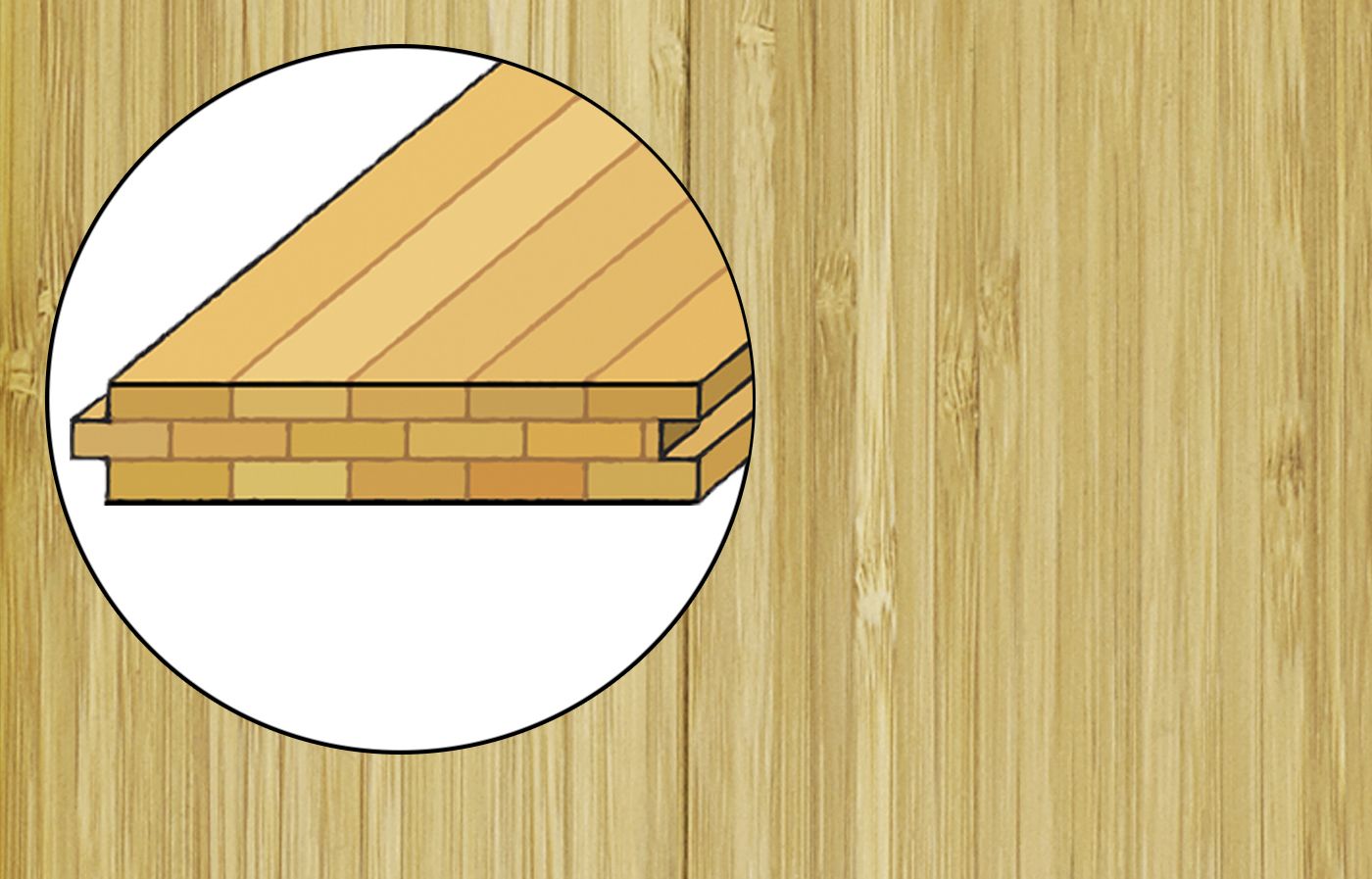
To make this kind of flooring, horizontal strips are adhered edge to edge, skin side up, making maximum use of the stalk. This orientation shows the nodes, or “knuckles,” for a classic bamboo look. Offset layers add strength. It comes natural, stained, and carbonized (heat-treated during manufacturing to give it a caramel-like hue).
Vertical Bamboo

Here, strips are arranged and glued with cut edges facing up for a linear look and a floor less likely to show dents than horizontal bamboo. Knuckles are much less noticeable, too. This flooring is available natural or carbonized but typically not stained, as the thin strips don’t absorb a stain as readily.
Strand-Woven Bamboo
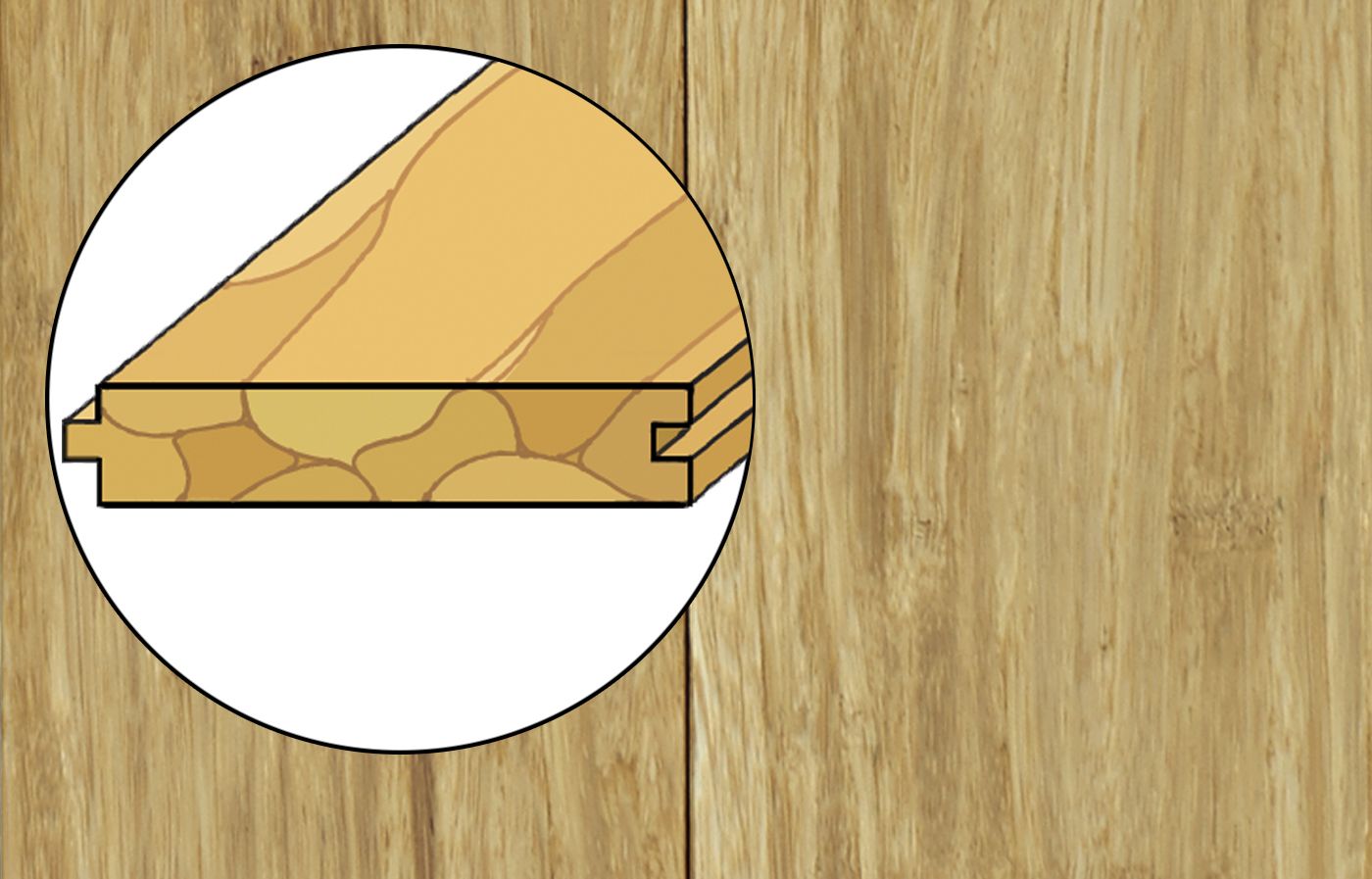
With this type, strips are soaked in adhesive, laid out lengthwise in various orientations, and then compressed in giant hydraulic presses, creating a solid rectangular mass milled into floorboards. The result is two to three times denser than other types of bamboo, lending itself to special finishes and surface treatments.
Bamboo Flooring Pros and Cons
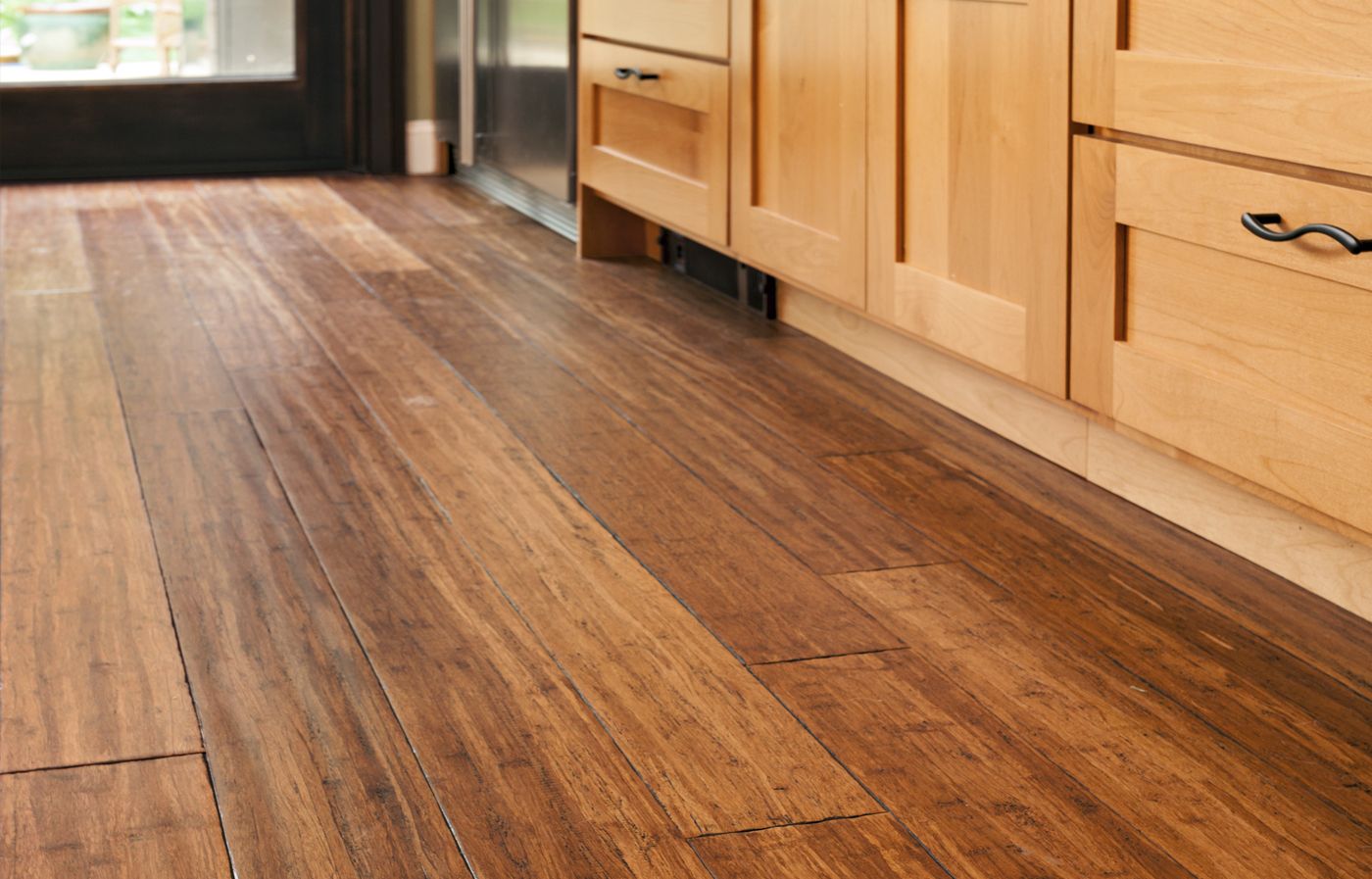
Like any flooring material, bamboo has advantages and disadvantages. Understanding these can help you decide if bamboo is the right choice for your home.
Advantages of Bamboo Flooring
- Sustainability: Bamboo is a fast-renewing resource, ready to harvest in 5–6 years, compared to hardwoods that can take decades to mature.
- Durability: High-quality bamboo flooring, especially strand-woven varieties, can be exceptionally durable and long-lasting.
- Appearance: Bamboo offers a unique, modern look that can complement various interior styles.
- Cost: Generally, bamboo flooring is less expensive than traditional hardwood options, especially when compared to exotic wood species.
- Maintenance: Bamboo floors are relatively easy to clean and maintain with regular sweeping and occasional damp mopping.
Disadvantages of Bamboo Flooring
- Moisture sensitivity: Like hardwood, bamboo can be susceptible to moisture damage, making it less suitable for bathrooms or basements.
- Potential scratching: While durable, bamboo can still scratch, especially in high-traffic areas or from pet nails.
- Limited refinishing options: Some types of bamboo flooring, particularly strand-woven, can be difficult to refinish due to their hardness.
- Potential off-gassing: Lower-quality bamboo flooring may contain adhesives that release volatile organic compounds (VOCs), making it crucial to choose a reputable brand.
Bamboo Flooring Durability
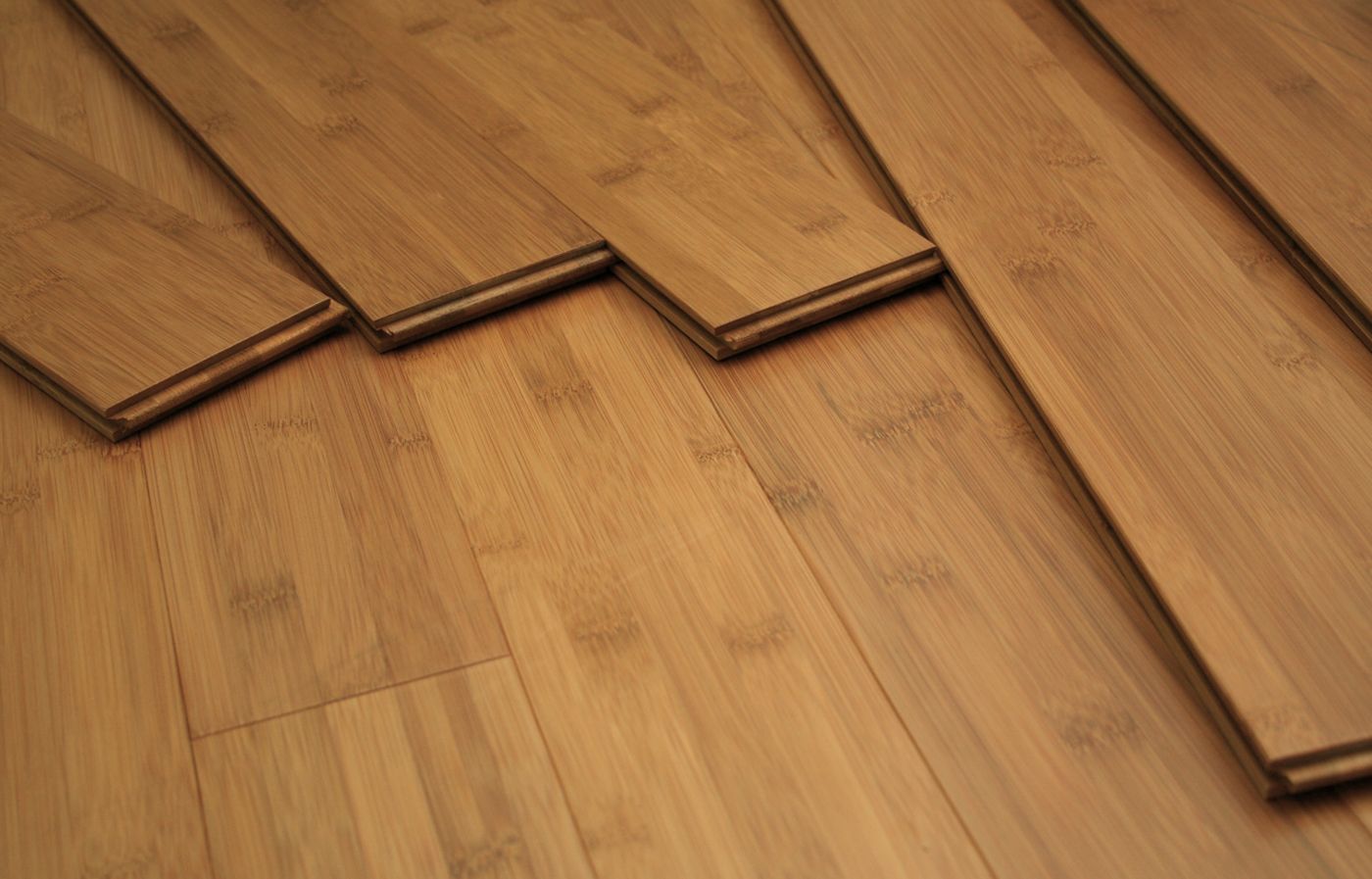
One of bamboo’s biggest benefits is that it’s durable, particularly the strand-woven varieties. The hardness of flooring is often measured using the Janka scale, which quantifies the force required to embed a steel ball into the wood.
Vertical and horizontal bamboo floors typically score around 1,825 on the Janka scale, which is harder than hickory. Strand-woven bamboo takes durability to another level, often scoring around 3,270 on the Janka scale. This puts it on par with Brazilian redwood.
This exceptional hardness makes strand-woven bamboo highly resistant to dents, dings, and wear from foot traffic. However, even the hardest bamboo can still scratch, especially from sharp objects or grit trapped under furniture.
Bamboo Flooring Buying Guide
Selecting the right bamboo flooring involves considering several factors, including color, style, finish, and quality indicators.
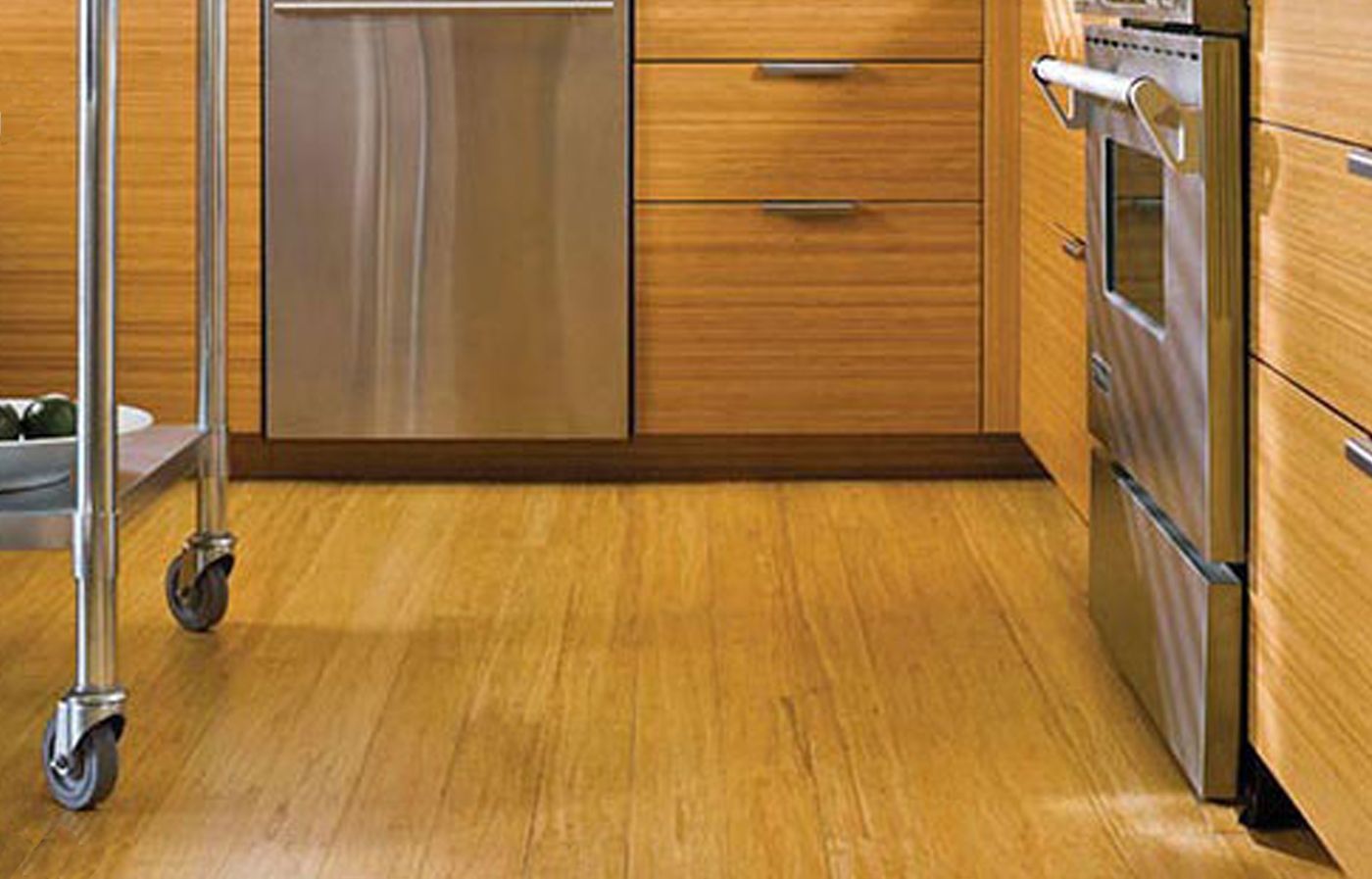
Color and Style Options
Bamboo flooring comes in many colors and styles to suit your design preferences.
- Natural: Light, honey-colored tones that showcase bamboo’s natural hue.
- Carbonized: Darker, caramel-like colors are achieved through heat treatment during manufacturing.
- Stained: A variety of colors from light to dark, including options that mimic different wood species.
- Textured: Some bamboo flooring options feature hand-scraped or distressed textures for a more rustic look.
Finish Types
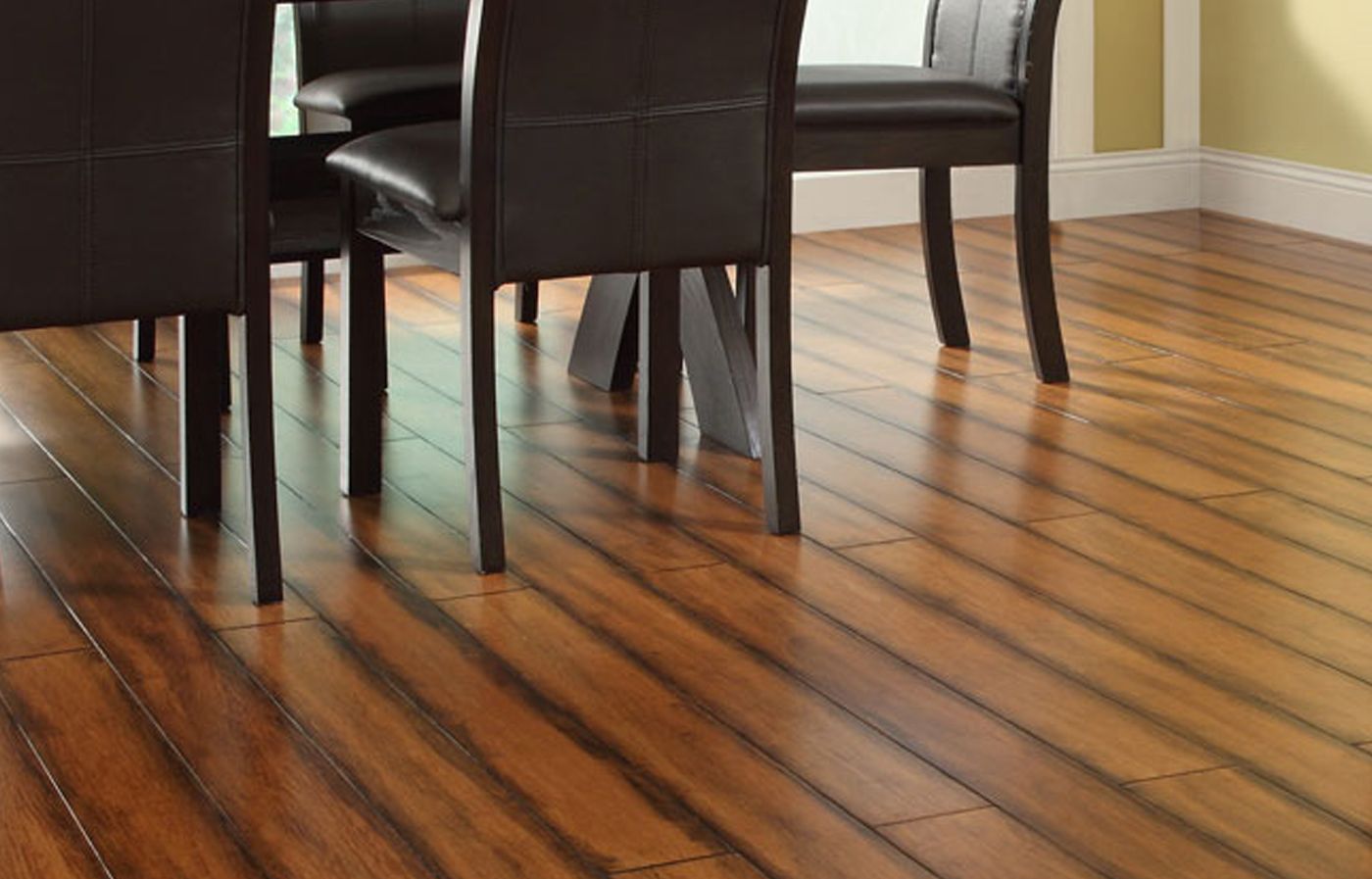
There are also different finishes, each with differing appearances and durability levels.
- Factory-applied aluminum oxide: A highly durable finish that provides excellent wear resistance.
- Oil-based finishes: These create a matte appearance and are easier to touch up if damaged.
- Unfinished: Some bamboo flooring is available unfinished, allowing for custom staining and finishing on-site.
Quality Indicators
When shopping for bamboo flooring, look for these quality indicators:
- Thickness: Solid boards typically come in 1/2 to 5/8 inch thick, while engineered planks are usually 3/8 to 1/2 inch.
- Hardness rating: Check the Janka hardness rating, especially if durability is a top concern.
- Certifications: Look for third-party certifications like FloorScore or GREENGUARD, which indicate low VOC emissions.
- Warranty: A longer warranty often indicates a higher-quality product.
- Manufacturing process: Strand-woven bamboo is generally the most durable option.
Installation Methods for Bamboo Flooring
Bamboo flooring can be installed using several methods, similar to hardwood flooring. The best method depends on your subfloor and the specific product you have chosen.
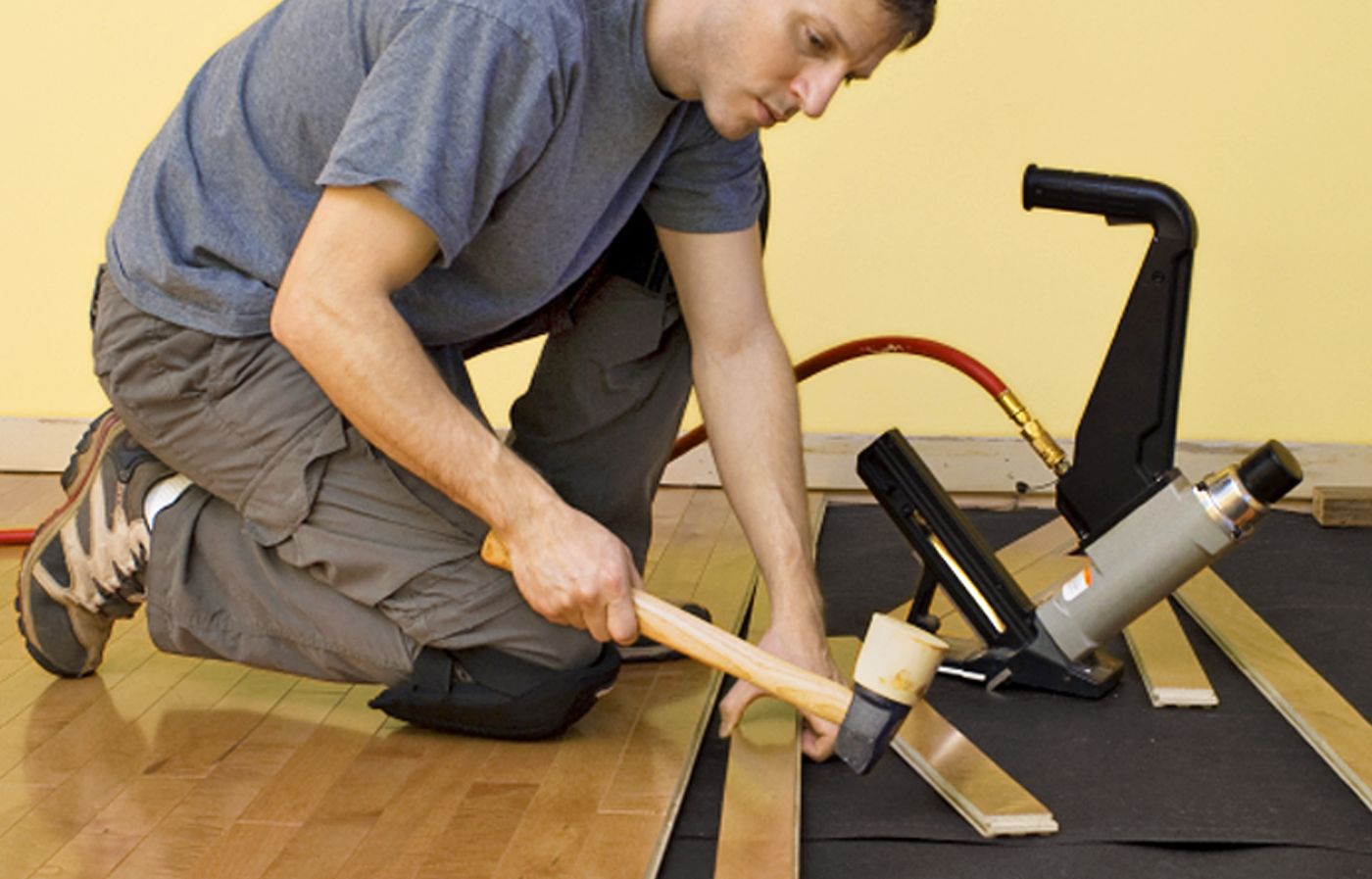
Nail-Down Installation
Nail-down installation is often considered the most secure method for solid bamboo flooring over a wood subfloor. It involves nailing the planks directly to the subfloor using a pneumatic flooring nailer.
| Pros | Cons |
| Creates a very stable floor | Requires a wood subfloor |
| Allows for natural expansion and contraction | More time-consuming than other methods |
Glue-Down Installation
Glue-down installation involves spreading an adhesive on the subfloor and laying the bamboo planks directly onto it. This method works well for solid and engineered bamboo flooring. It can also be used over concrete subfloors.
| Pros | Cons |
| Works on various subfloor types | Messy and time-consuming |
| Creates a very stable floor | Difficult to remove |
Floating Floor Installation
A floating floor installation does not attach the bamboo to the subfloor. Instead, the planks are connected to each other, often using a click-lock system, and “float” over the subfloor.
| Pros | Cons |
| Easiest method for DIY installation | Not as solid underfoot compared to nailed or glued floors |
| Works on various subfloor types | Noisier to walk upon than flooring using other installation methods |
| Eay to remove or replace | Requires baseboard and shoe molding |
Maintenance and Care Tips for Bamboo Floors
Proper maintenance is key to keeping your bamboo floors looking beautiful. Here are some tips.
- Regular cleaning: Sweep or vacuum regularly to remove dirt and debris that can scratch the floor.
- Damp mopping: Use a slightly damp mop for deeper cleaning, but avoid excess water.
- Clean spills immediately: Wipe up spills immediately to prevent water damage.
- Use protective pads: Place felt pads under furniture legs to prevent scratches.
- Avoid high heels: Stiletto heels can dent bamboo floors.
- Control humidity: Use a dehumidifier in humid conditions to prevent moisture damage.
- Use proper cleaning products: Avoid harsh chemicals and use cleaners specifically designed for bamboo or hardwood floors.
Bamboo Flooring Cost
Bamboo flooring is comparable in price to traditional hardwood, but prices vary widely based on quality, type, and brand. Angi reports that homeowners pay $7–$20 per square foot for bamboo flooring materials and professional installation. This compares to $5-$15 per square foot for traditional hardwood floors.
Some types of bamboo flooring, particularly click-lock floating floors, can be suitable for DIY installation, potentially saving on labor costs.
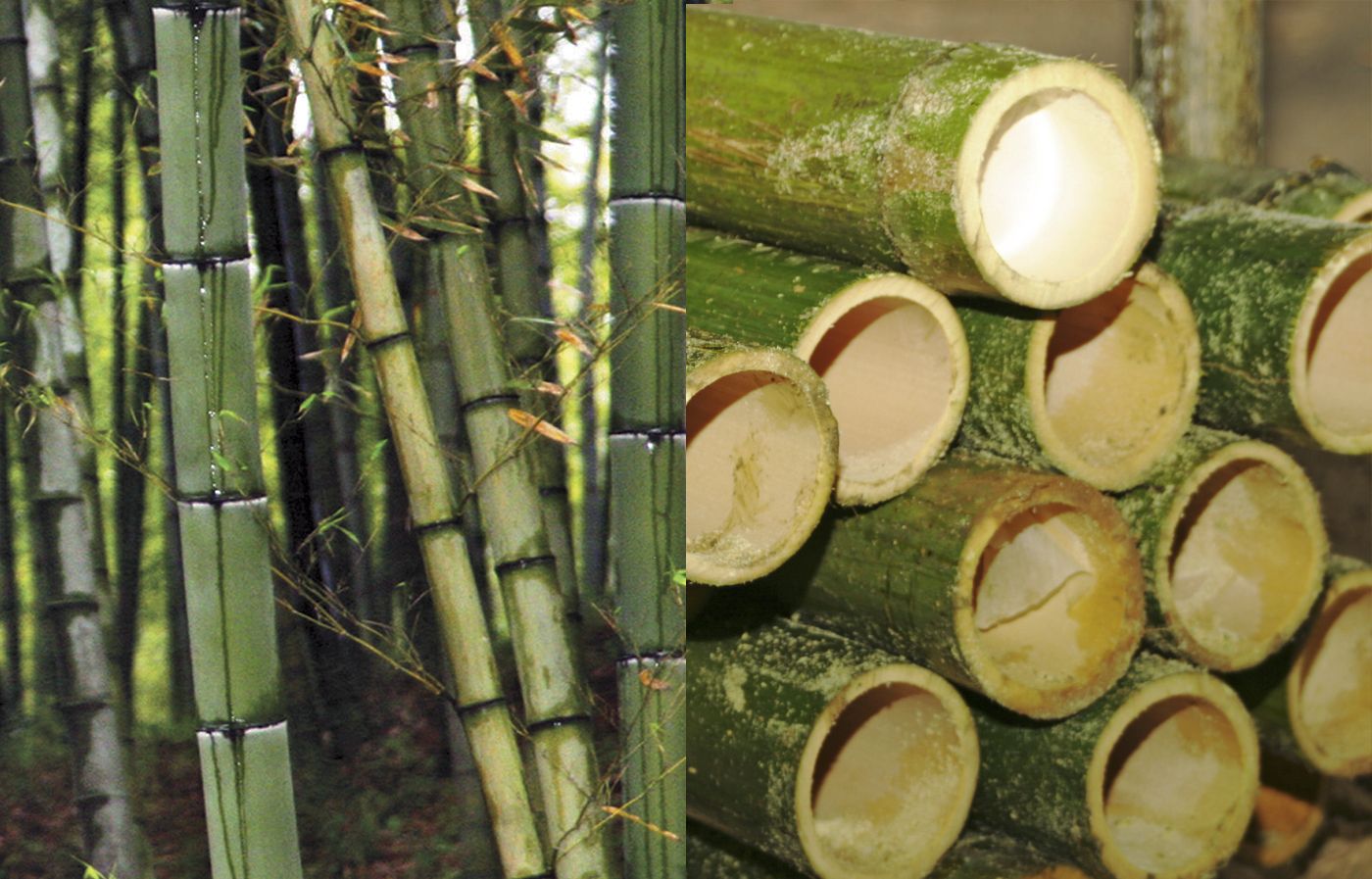
Our Conclusion
Bamboo flooring is durable, stylish, and eco-friendly. It comes in various types, colors, and finishes to suit your style preferences, while its hardness—particularly in strand-woven varieties—provides excellent durability for busy households.
However, like any flooring option, bamboo has its drawbacks. It’s sensitive to moisture, can scratch, and the quality can vary significantly between manufacturers. But with proper selection and care, bamboo flooring can be a beautiful, durable, and sustainable addition to your home.
